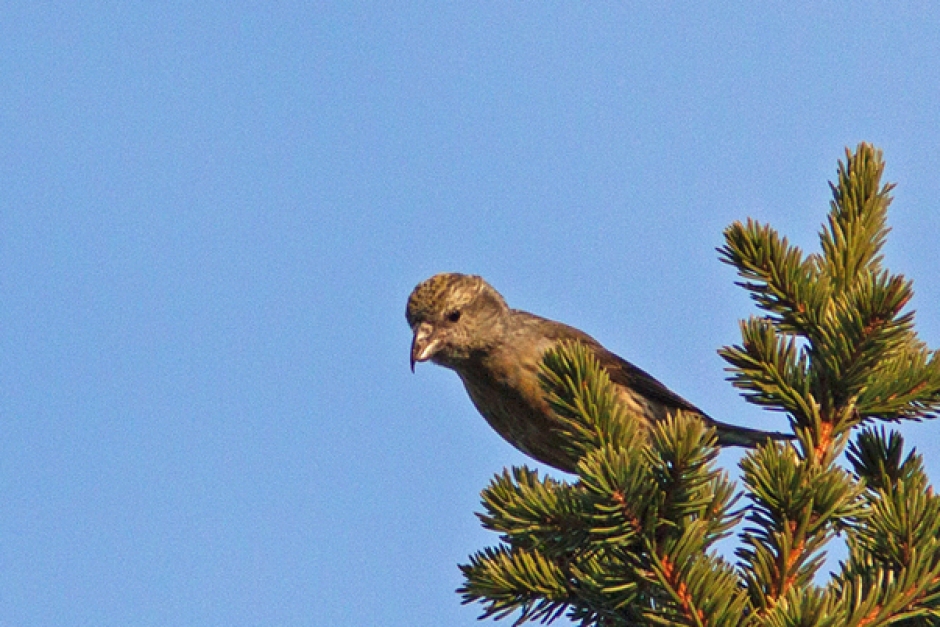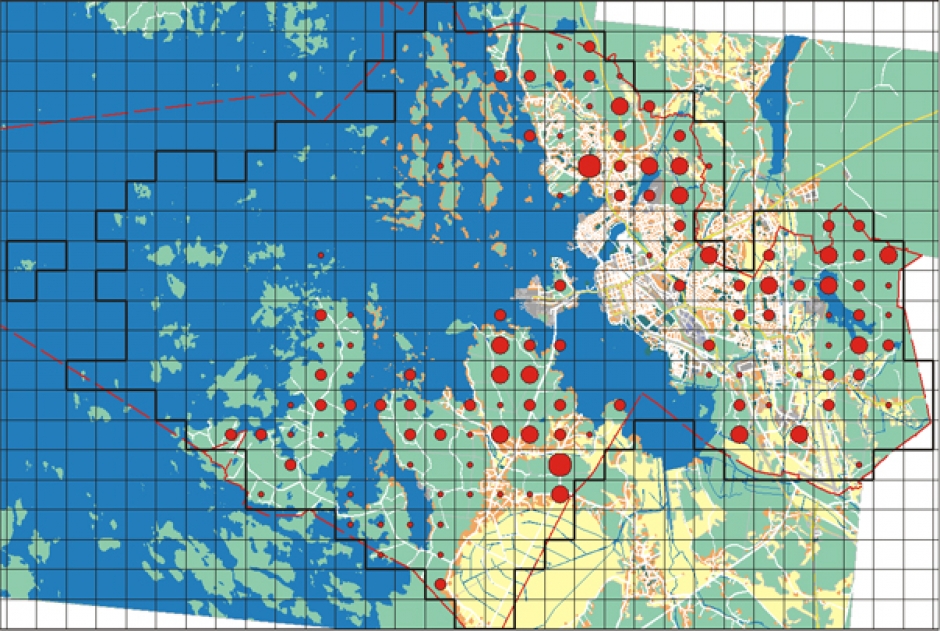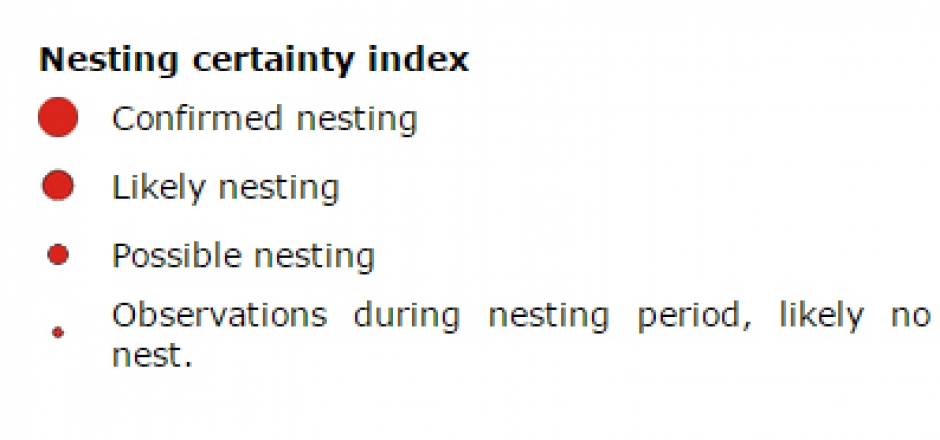Common Crossbill
Loxia curvirostra

General information. The common crossbill inhabits the taiga forests in the east. Annual variations in the nesting population are great. During years with an abundance of coniferous tree seeds, the common crossbill migrates to where the most cones are located. During successful years when habitat environments are plentiful, the population of the common crossbill is abundant. Harder, unsuccessful years, however, result in the population maintaining a low growth gradient.
- Length 18 cm
- Builds a nest in a spruce or pine tree
- Migratory species, nesting where there is an abundance of spruce- or pine cones
- Feeds on seeds from spruce or pine trees and insects
Habitat. The common crossbill thrives in vast areas of coniferous forests and prefers medium age and older growth spruce forests.
Distribution in Vaasa. During nesting season, the common crossbill was observed in about 100 survey blocks. The observations were classified through low ranking according to the index of nesting certainty (1 to 2). This occurred because the species usually nests so early, between March to April, and the majority of the fieldwork was conducted during May to July. Observations made in the end of May, could have possibly been young that have left the nesting site and flown tens or even hundreds of kilometers. This is a well known phenomenon with common crossbills and is constantly a factor taken into consideration in nesting bird surveys. The common crossbill nests in abundance during years with good coniferous seed harvests. The species can then be found with greatest probability in the large areas of coniferous forest in the city, such as Pilvilampi, Böle, Öjen or Västervik. During difficult years, like the summer of 2007, the number of nesting crossbills was considerably low.


